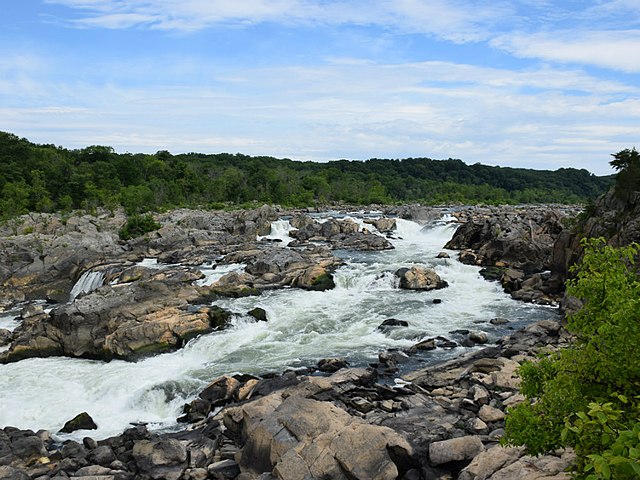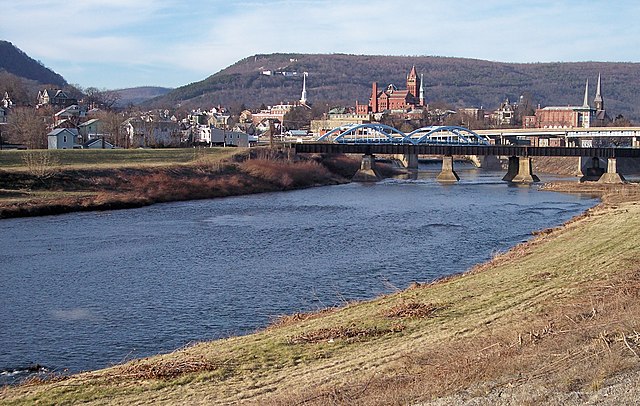The Washington Aqueduct is an aqueduct that provides the public water supply system serving Washington, D.C., and parts of its suburbs, using water from the Potomac River. One of the first major aqueduct projects in the United States, it was commissioned by the U.S. Congress in 1852, and construction began in 1853 under the supervision of Montgomery C. Meigs and the U.S. Army Corps of Engineers. Portions of the aqueduct went online on January 3, 1859, and the full pipeline began operating in 1864.
The Union Arch Bridge carries the Washington Aqueduct across Cabin John Creek in 2008
The Washington Aqueduct Dam, upstream of the Potomac River's Great Falls
Dalecarlia Water Treatment Plant
The Potomac River is a major river in the Mid-Atlantic region of the United States that flows from the Potomac Highlands in West Virginia to the Chesapeake Bay in Maryland. It is 405 miles (652 km) long, with a drainage area of 14,700 square miles (38,000 km2), and is the fourth-largest river along the East Coast of the United States and the 21st-largest in the United States. More than 5 million people live within its watershed.
Potomac River
The Potomac River in Washington, D.C., with Arlington Memorial Bridge in the foreground and Rosslyn, Arlington, Virginia in the background
The North Branch between Cumberland, Maryland, and Ridgeley, West Virginia, in 2007
Canoers at Hanging Rocks on the South Branch in the 1890s







